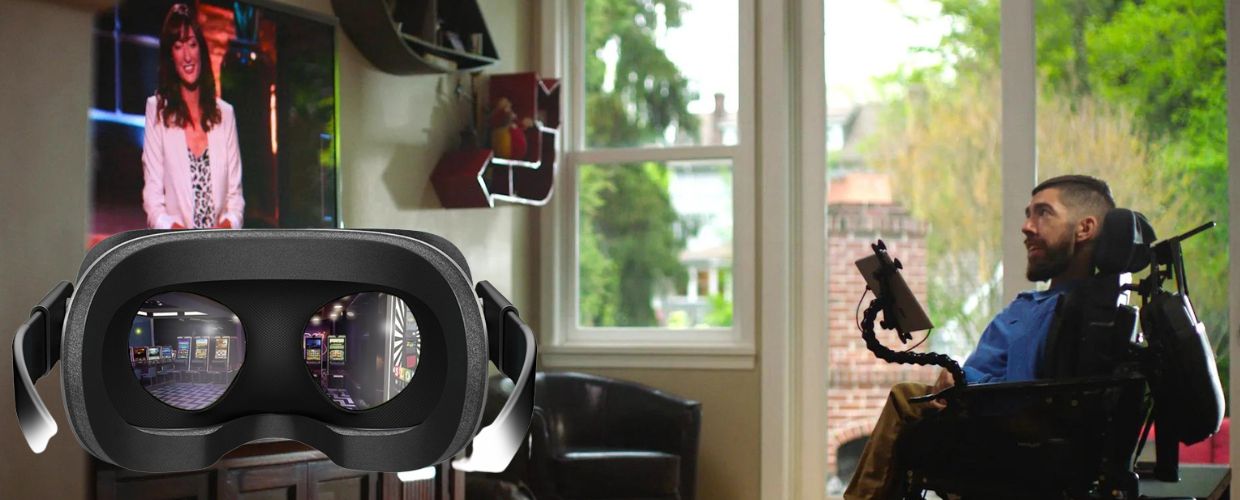Technological advancements have revolutionized our interactions with computers, from traditional keyboards and mice to touchscreens and voice recognition systems. One such innovative input method gaining popularity is gaze-based control, where users can navigate and interact with interfaces using their eye movements. This article will explore various input device examples that enable gaze-based control, revolutionizing our interactions with technology.
Gaze-based Control Applications
Gaze-based control finds applications in various domains, including assistive technology, virtual reality, and human-computer interaction research.
Eye-tracking Software
Software applications, combined with compatible eye trackers, enable gaze-based control on traditional computers. These systems typically provide an on-screen cursor controlled by eye movements, allowing users to navigate through menus, click, scroll, and perform other interactions.
Gaze-based Gaming
Eye trackers can enhance the gaming experience by introducing gaze-based control mechanisms. Games designed for gaze-based control enable players to navigate game worlds, aim, select objects, and trigger actions simply by looking at specific targets on the screen.
Assistive Technology
Gaze-based control holds great potential for individuals with mobility impairments. People with limited or no physical mobility can control various devices, communicate, and perform daily tasks using gaze-based interactions using eye trackers and specialized software.
Virtual and Augmented Reality
Gaze-based control has found its way into virtual and augmented reality systems. By integrating eye trackers into VR/AR headsets, users can interact with virtual environments by simply directing their gaze, enabling immersive experiences and intuitive interactions.
Research and User Experience Studies
Gaze-based control is widely used in research and user experience studies to gain insights into human behavior, attention, and visual perception. Researchers can track eye movements to analyze how users interact with interfaces, websites, or advertisements, providing valuable data for improving design and usability.
Gaze-based Input Device Examples
Gaze-based control input devices are designed to enable users to interact with technology by tracking their eye movements. Gaze-based control input device examples are given below.
Eye Trackers
Eye trackers are the core input device examples for gaze-based control. They use infrared sensors, cameras, or other specialized technologies to accurately track the user’s eye movements, including the direction of gaze and fixation points. Eye trackers can be standalone or integrated into monitors, laptops, or virtual reality headsets.
Gaze Interaction Devices
Gaze interaction devices are input device examples that rely on eye-tracking technology for control. These devices typically combine eye tracking with additional sensors or buttons for enhanced interaction. Examples include gaze-enabled keyboards, mice, or touchpads, where users can perform actions by combining eye gaze with traditional input methods.
Head-mounted Displays (HMDs)
Head-mounted displays, such as virtual reality (VR) or augmented reality (AR) headsets, often incorporate eye-tracking technology. With gaze-based control, users can interact with virtual objects or navigate through immersive environments by looking at specific targets or eye-based gestures.
Gaze-based Mobile Devices
Some mobile devices for Gaze-based input device examples, such as smartphones and tablets, have eye-tracking capabilities. These devices enable gaze-based control for various applications, including scrolling, selecting, and navigating content by tracking the user’s eye movements.
Assistive Technology Devices
Gaze-based control has proven to be particularly beneficial in assistive technology. Specialized input devices, such as eye gaze communication systems, allow individuals with motor disabilities to control their environment, communicate, and access digital content using their eye movements.
Gaze-based Wearable Devices
Advancements in miniaturization have led to the development of gaze-based wearable devices. These include smart glasses or headsets that incorporate eye-tracking technology. Wearable devices offer hands-free interaction with the environment, allowing users to perform tasks such as navigation, information retrieval, or remote control using gaze commands.
Gaze-enabled Automotive Interfaces
In the automotive industry, gaze-based control is being explored to enhance driver safety and improve user interfaces. Gaze-based automotive interfaces enable drivers to control infotainment systems, adjust settings, or receive alerts through eye movements, reducing the need for manual interaction while driving.
Conclusion
The Gaze-based input device examples discussed in this article have opened up new possibilities for human-computer interaction, offering an alternative input method to enhance accessibility, gaming experiences, virtual reality, and research endeavors. In human-computer interaction, input device examples show that technologies have evolved significantly. As technology advances, we expect further refinement and integration of gaze-based control in various applications and input device examples, providing more intuitive and seamless interactions between humans and machines.
Read the Latest Technology and Business News:
TechGolly Latest News
TechGolly Future Tech News
TechGolly Business News
TechGolly Product News
TechGolly Stock Market News
TechGolly Research News


